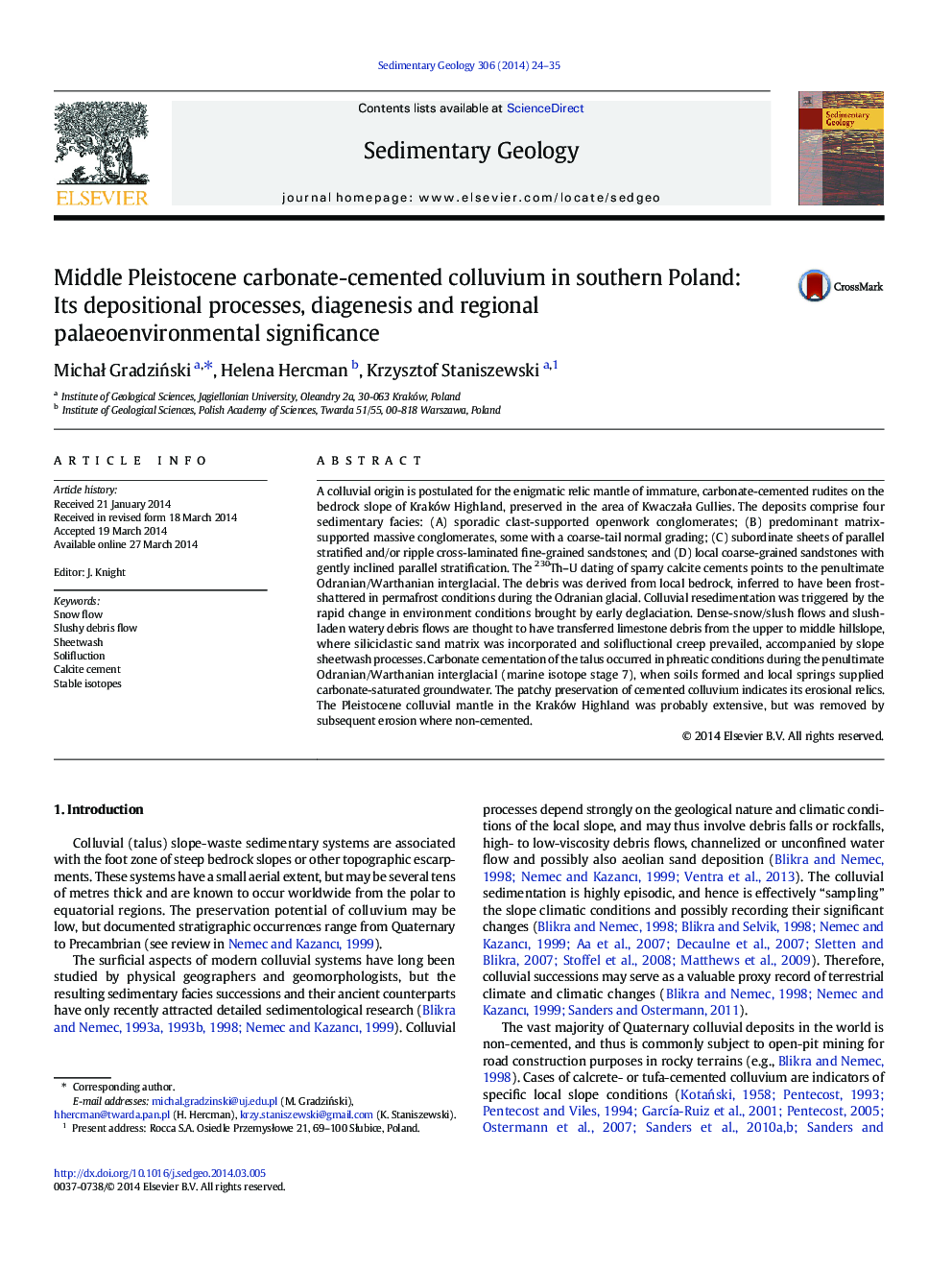| Article ID | Journal | Published Year | Pages | File Type |
|---|---|---|---|---|
| 4689445 | Sedimentary Geology | 2014 | 12 Pages |
Abstract
A colluvial origin is postulated for the enigmatic relic mantle of immature, carbonate-cemented rudites on the bedrock slope of Kraków Highland, preserved in the area of KwaczaÅa Gullies. The deposits comprise four sedimentary facies: (A) sporadic clast-supported openwork conglomerates; (B) predominant matrix-supported massive conglomerates, some with a coarse-tail normal grading; (C) subordinate sheets of parallel stratified and/or ripple cross-laminated fine-grained sandstones; and (D) local coarse-grained sandstones with gently inclined parallel stratification. The 230Th-U dating of sparry calcite cements points to the penultimate Odranian/Warthanian interglacial. The debris was derived from local bedrock, inferred to have been frost-shattered in permafrost conditions during the Odranian glacial. Colluvial resedimentation was triggered by the rapid change in environment conditions brought by early deglaciation. Dense-snow/slush flows and slush-laden watery debris flows are thought to have transferred limestone debris from the upper to middle hillslope, where siliciclastic sand matrix was incorporated and solifluctional creep prevailed, accompanied by slope sheetwash processes. Carbonate cementation of the talus occurred in phreatic conditions during the penultimate Odranian/Warthanian interglacial (marine isotope stage 7), when soils formed and local springs supplied carbonate-saturated groundwater. The patchy preservation of cemented colluvium indicates its erosional relics. The Pleistocene colluvial mantle in the Kraków Highland was probably extensive, but was removed by subsequent erosion where non-cemented.
Related Topics
Physical Sciences and Engineering
Earth and Planetary Sciences
Earth-Surface Processes
Authors
MichaÅ GradziÅski, Helena Hercman, Krzysztof Staniszewski,
